
Fast, affordable Internet access for all.
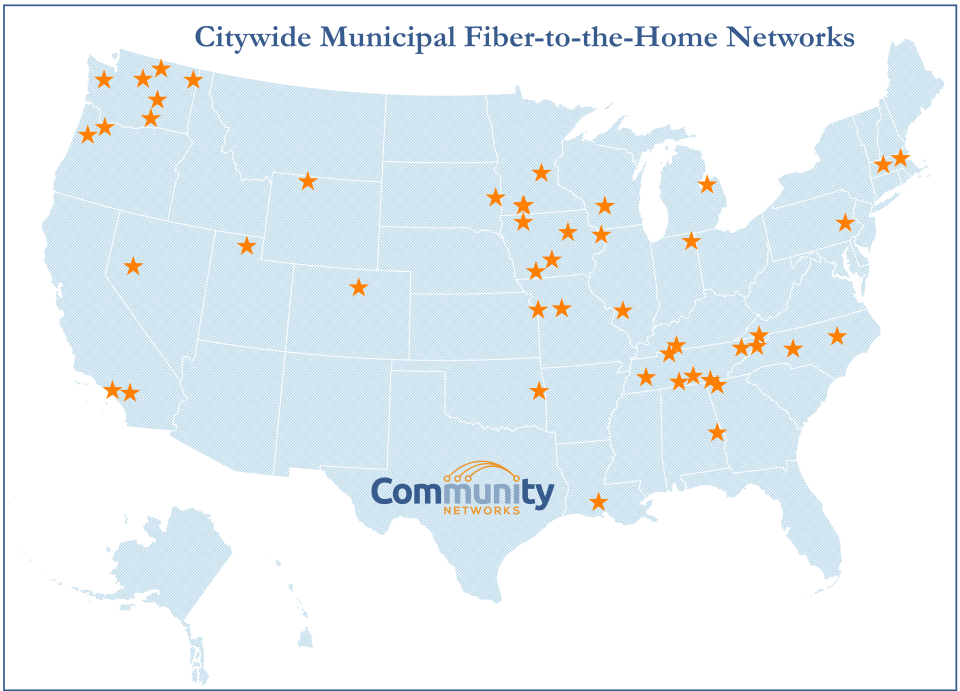
This is a list of citywide, municipal, Fiber-to-the-Home (FTTH) networks across the United States. Our Community Networks Map offers an interactive look at the many ways communities have improved Internet access with smart local investments. These communities have some of the best connectivity you can find in the entire country — supporting strong local economies and a high quality of life to ensure they can thrive.
This list is ordered by state and includes information on any legal barriers to municipal networks.
Jump to a State With a FTTH Community Network
California, Colorado, Georgia, Iowa, Illinois, Indiana, Kentucky, Louisiana,
Maine, Massachusetts, Michigan, Minnesota, Missouri, North Carolina, Nevada,
Ohio, Oklahoma, Oregon, Pennsylvania, South Dakota, Tennessee, Texas, Utah,
Vermont, Virginia, Washington, Wisconsin, Wyoming
The criteria for networks to be featured on this page:
The top residential speed listed is the highest residential speed found in advertising/promotional materials. Fiber networks are scalable: these networks may be able to offer higher speeds than what is listed here.
Please contact Ry Marcattilio at ry@ilsr.org to suggest additions or corrections to this page.
Map last updated: 1/1/2017
Page last updated: 3/19/2019
California
Vernon Gas & Electric Department Fiber Optic Division
Vernon, CA
Vernon is the smallest incorporated city in the state of California. Describing itself as "exclusively industrial," the city is home to over 1,800 businesses that employ 50,000 people from surrounding communities. The residential population is only 112 in 31 existing households. The fiber network offers these few residents an opportunity to connect.
Colorado
Unless incumbents refuse to provide the requested service, municipalities must have a referendum to offer services. This barrier is often referred to as S.B. 152, and passing a referendum is effectively opting-out of the state law.
See Colo. Rev. Stat. Ann. § 29-27-201 et seq.

NextLight
Communities Served: Longmont, Colorado
Home to almost 90,000 people, Longmont took advantage of its previous fiber assets to expand services to residents. In 2009, residents first attempted to pass the referendum to lift the state restrictions on municipally-provided Internet service. Although this first attempt failed, the residents did not give up. In 2011 they passed the referendum, successfully reclaiming their local authority. The city utility department built up a network offering speeds of up to one Gigabit-per-second (Gbps) to residents and businesses. As of September 2016, areas with FTTH have a take rate of 56 percent. Now the network, known as NextLight, supports the local school district’s digital learning initiatives, ensuring that all students and teachers have access to technology. We’ve featured Longmont several times on the Community Broadband Bits Podcast in Episode 106, Episode 161, and Episode 186.
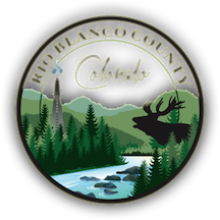
Rio Blanco County Network
Communities Served: Rangely, CO; Meeker, CO
In 2014, more than 80 percent of Rio Blanco County residents voted to restore local control in a referendum on SB 152, the state’s restriction on municipal networks. The county built a fiber-to-the-home network throughout the towns of Meeker and Rangley, where most residents live. The county deployed fixed wireless to residents who live in more remote areas. To learn more, listen to an interview with the county IT director, Blake Mobley, in Episode #158 of the Community Broadband Bits podcast.
Georgia

OptiLink
Communities Served: Dalton, Georgia
The city of Dalton is known for its carpet manufacturing and its long-running FTTH network. Starting in the early 2000s, the city created a telecommunications division. By 2003, OptiLink was up and running, delivering voice, video, and Internet access to residents. The great recession, however, hit Dalton hard -- the city had one of the highest unemployment rates in the nation. Now, the “Carpet Capital” is diversifying its industries and reinventing itself for the 21st century.
Iowa
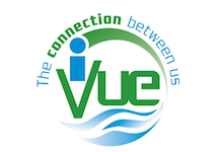
iVue
Communities Served: Bellevue, Iowa
While other communities built fiber networks for better Internet access, Bellevue had a different plan. The community wanted to stay in the video business; they had owned an older cable system for a long time previously. Video quality, however, was deteriorating and soon everything was going to be pushed to digital. In the early 1990s, Bellevue began to invest in the future - scalable fiber technology for every home to provide video services. Now the town of 2,000 people has high-quality video and excellent Internet service. For more information, check out the Bellevue Economic and Tourism Association’s video on the history of the fiber optic system.
Cedar Falls Utilities
Communities Served: Cedar Falls, Iowa
One of the more famous networks, Cedar Falls Utilities’ long-standing municipal network earned a presidential visit in early 2015. Cedar Falls started with a hybrid-fiber coaxial (HFC) network. Launched in 1996, the service brought affordable, reliable, fast Internet service to the town of then 34,000 people. In 2011, Cedar Falls overbuilt the network with high-capacity fiber in order to improve the service - and provide gigabit speeds. In 2013, representatives from Cedar Falls Utilities joined us for Episode 75 of the Community Broadband Bits Podcast.

CRMU LocaLink
Communities Served: Coon Rapids, Iowa
Coon Rapids Municipal Utilities first started with a cable television system back in 1982. By 1999, the city had upgraded to a hybrid fiber-coaxial network and was offering homes and businesses Internet access, cable television, and voice services. In 2017, CRMU once again upgraded their system, this time to a future-proof Fiber-to-the-Home network to meet increasing demand. In addition to communications services, the municipal utilities department also provides electricity, natural gas, and water services to Coon Rapids residents.
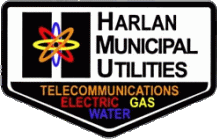
Harlan Municipal Utilities
Communities Served: Harlan, Iowa
More than two decades ago, Harlan Municipal Utilities began offering Internet access to the city of 4,800 via a hybrid fiber-coaxial network. Starting in 2012, Harlan upgraded to a Fiber-to-the-Home network to ensure that city residents and businesses would continue to have access to the speeds and reliability that they need. Check out Episode 151 of the Community Broadband Bits podcast to learn more about Harlan's fiber network.
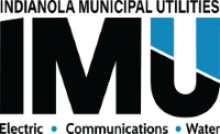
Indianola Municipal Utilities
Communities Served: Indianola, Iowa
Like many other cities in Iowa, Indianola established its municipal broadband utility in the late 1990s as part of city's utilities department, Indianola Municipal Utilities (IMU). At first, IMU used the fiber network to connect schools, libraries, and other community anchor institutions, before expanding to serve businesses. In 2012, IMU launched residential Fiber-to-the-Home services in partnership with local provider Mahaska Communication Group (MCG). Five years later, Indianola decided to buy out MCG, expand the fiber network citywide, and offer connectivity to residents directly.

Lenox Municipal Utilities
Communities Served: Lenox, Iowa
In the southwest corner of Iowa, the small town of Lenox offers residents and business a fiber network for all their connectivity needs. The network is the incumbent cable provider in the area and features a triple-play of video, voice, and Internet services.

Spencer Municipal Utilities
Communities Served: Spencer, Iowa
Spencer, population 11,000, is located in the northwest section of the state. Since 2000, the municipal utilities department has supplied water, electric, video, telephone and Internet services. The addition of telecommunications came when townsfolk realized Internet access would improve their community. At first, they used a coax network, but they built a fiber network in 2013. Local businesses, such as Hansen's Clothing, benefit from the better connectivity.

Connect Waverly
Communities Served: Waverly, IA
In the early 1990s, Waverly installed fiber to monitor the electric system. Dark Fiber for businesses, schools, and libraries. In 2000, the residents of Waverly, Iowa, voted in a referendum to build a citywide high-speed network. They spent years planning the network before moving forward in 2013 with the creation of a communications division. Now, the Fiber-to-the-Home network is fully operational and more than 1,000 people have signed up for the service. To learn more about the history of the network, check out Community Broadband Bits Podcast Episode 53.
Illinois

Highland Communication Services
Communities Served: Highland, Illinois
Highland is home to 10,000 people and Illinois’ first citywide municipal FTTH network. The idea to invest in advanced connectivity took off with overwhelming popular support. In a series of three referendums, the community began the process to build a fiber network. During the last referendum on the matter, in April of 2009, 75 percent voted to move forward the FTTH project using revenue bonds. Learn more about the network in Episode 358 of the Community Broadband Bits podcast.
Indiana
Auburn Essential Services
Communities Served: Auburn and Garrett, Indiana
1985 was the year of the first “Back to the Future”, but for one small town in Indiana it was the year they entered the future - deploying municipal fiber. The network, originally intended to improve the electric system, quickly grew. By 2001, Auburn, Indiana, started exploring ways to provide Internet service. In mid-2006, they crafted a phased approach, each section of the built network would fund the next section. Within the first few months of operation, the network had a take-rate from homes and businesses of around 30%. The network kept jobs in the community as it became a key aspect of maintaining Cooper Standard (an automotive parts manufacturer) in the town. Listen to episode 77 of the Community Broadband Bits Podcast to learn more.
Kentucky

Russellville EPB SmartNet
Communities Served: Russellville, Kentucky
The community of 7,000 is the seat of Logan County and centrally located near Nashville and Clarksville. To encourage a versatile economy, Russellville's Electric Plant Board (EPB) invested in telecommunications. In 2005, EPB began to offer wireless Internet service to the community and started to build a fiber network by 2010. Russellville EPB General Manager Robert White describes the community's approach in Episode 82 of the Community Broadband Bits podcast.
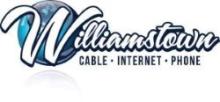
Williamstown Broadband
Communities Served: Corinth, Kentucky (also offers cable Internet access and partial fiber in Williamstown, Kentucky)
The City of Williamstown first deployed its cable network in 1984. Since then, the municipal cable department has continued to upgrade the system and expand Internet access to the rest of Grant County. In the 2000s, Williamstown upgraded to a hybrid fiber-coaxial system within the city and deployed a fixed wireless network to connect other communities in the county. A few years later in 2010, Williamstown took advantage of federal stimulus funds to build out a fiber network in nearby Corinth. Before the FTTH network, residents of the small city didn't even have access to DSL, and now they have some of the most reliable connectivity in the country.
Louisiana
Louisiana requires a referendum as well as imputing a variety of costs and renders incumbent franchise obligations void until a variety of benchmarks are satisfied.
See La. Rev. Stat. Ann. § 45:884.41 et seq.
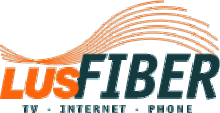
LUSFiber
Communities Served: Lafayette, Louisiana
In June 2005, voters in Lafayette took to the polls to demand better connectivity. Although LUS Fiber has contended with lawsuits, delays, restrictive state laws, and criticisms, the network has made a positive impact. In Fall 2014, three high tech companies committed to bringing approximately 1,300 new jobs to the "Silicon Bayou" thanks to the presence of the network and the University of Louisiana's local top-ranked computer science program. In April 2015, Standard & Poor gave LUS Fiber an A+ bond rating. LUS Director Terry Huval speaks to the success of Lafayette in Community Broadband Bits Episode 144. For more information, check out the 2012 ILSR report Broadband at the Speed of Light and Correcting Community Fiber Fallacies: Attacks on LUS Fiber.
Maine
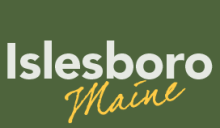
Islesboro Municipal Broadband
Communities Served: Islesboro, Maine
The small island town of Islesboro began exploring ways to improve connectivity in 2012. After investigating its options, the community decided to build its own fiber network. Residents voted to fund network construction with a general obligation bond, agreeing to a slight property tax increase. Islesboro works with a private provider to offer Internet access to subscribers on the town-owned network. Listen to Episode 155 of the Community Broadband Bits podcast from 2015 for a peek into the early days of the project.
Massachusetts
Concord Light Broadband
Communities Served: Concord, Massachusetts
In 2003, frustrated with their Internet service providers, the townspeople of Concord voted to pursue other options. Over the years, they built up an Institutional Network, and then they created a pilot project for residential service in 2014. Now, the network is citywide and serving both the needs of the local government and the people.
LeverettNet
Communities Served: Leverett, Massachusetts
This small town has some of the fastest speed in the nation. Between 2011 and 2013, they built a municipal fiber network, LeverettNet. Now it serves 650 of the 800 households. Residents approved a bond to construct the network. The bond will be repaid with revenues from the network and a modest tax increase. For more information, check out Episode 113 of the Community Broadband Bits Podcast with Peter d'Errico, a member of Leverett’s Select Board.
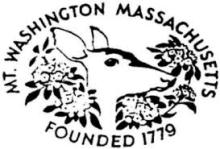
Mount Washington Broadband Network
Communities Served: Mount Washington, Massachusetts
Mount Washington, the third smallest town in Massachusetts, lit up it's Fiber-to-the-Home network in 2017 after four years of research and planning. Before, most town residents only had access to expensive and unreliable satellite connectivity. To finance the new fiber network, Mount Washington utilized internal funds and a variety of state programs. Listen to our interview with Select Board member Gail Garrett in episode 212 of the Community Broadband Bits Podcast to learn more.
Michigan
Michigan requires communities to issue an RFP for a network and only build if they receive fewer than 3 qualified bids. If the community builds it, they must adhere to the terms of the RFP.
See Mich. Comp. Laws Ann. § 484.2252
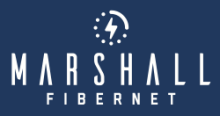
Marshall FiberNet
Communities Served: Marshall, Michigan
Before Marshall launched FiberNet in 2018, many residents of the south central Michigan city only had access to slow DSL connectivity. The city's new fiber network is significantly faster — families and businesses can subscribe to symmetrical speeds of up to 1 Gigabit per second. In addition to improving local connectivity, Marshall FiberNet has also resulted in lower costs and better Internet access for municipal facilities. For an update on the network, listen to Episode 345 of the Community Broadband Bits podcast.
Sebewaing Light & Power
Communities Served: Sebewaing, Michigan
Although known for its sugar beet farms, the Village of Sebewaing also has a gigabit fiber network. In the early 2000s, the village installed a fiber loop, connecting public anchor institutions. By the 2010s, the business community clamored for more options and better service. Sebewaing issued a Request For Proposals from current providers in 2013. Receiving few responses, Sebewaing decided to move forward on its own. The village’s utility, Sebewaing Light and Water, deployed 90% of the fiber aerially on utility poles. Thanks to the electric and water utility’s expertise, the city took on no new debt to bring about the network. For more information, check out the interview with Sebewaing Light and Water’s Superintendent Melanie McCoy on Community Broadband Bits Episode 126.
Minnesota
Minnesota requires a super majority (65%) referendum to own or operate a "telephone exchange."
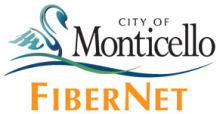
Monticello Fibernet
Communities Served: Monticello, Minnesota
Located 40 miles outside Minneapolis, Monticello had slow Internet access via DSL and Dial-Up. Now, the community sports two fiber networks: one from the city and one from an incumbent provider. This rare turn of events came about when Monticello’s community took matters into their own hands and began to prepare to build the Fibernet in 2008 even though the city does not have a municipal electric utility. The incumbent Internet service providers were not happy and engaged in a price-war. One even sued the city to delay the municipal network while they built their own fiber network to compete. This put financial stress onto Monticello, but the situation brought about widespread connectivity and affordable prices (the original goals of the Fibernet). We estimated the aggregate savings to the community at about $10 million in our 2014 report, All Hands on Deck.
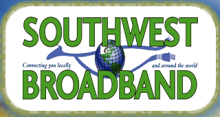
Southwest Minnesota Broadband Systems (SMBS)
Communities Served: Jackson, Lakefield, Round Lake, Bingham Lake, Brewster, Wilder, Heron Lake, Okabena
In 2011, Southwest Minnesota Broadband Systems, a collaboration of several rural communities in Southwest Minnesota, brought Internet service to its first customer. Enabled by broadband stimulus funding that extended the reach of Windom's municipal network, SMBS provides FTTH technology to even the most rural members of the community. By September 2012, the network stretches 181-mile network, and the reliable, affordable connectivity is even better than many Minnesota metro areas. For more information, check out Community Broadband Bits Episode 64 and the 2014 report All Hands on Deck.

WindomNet
Communities Served: Windom, Minnesota
The first city in Minnesota with a citywide FTTH network, Windom's journey begins in the 1990s. The community faced poor connectivity and few options. In 1999, they took a vote on whether to pursue a municipal network, but the measure failed. Then, the incumbent Internet service provider skipped over Windom when announcing DSL availability in southwest Minnesota. Frustrated, the townspeople went back to the polls in 2000, deciding to consider a municipal network. They settled on FTTH and began construction in 2004. In 2007, Windom began to collaborate with the eight other communities that would form Southwest Minnesota Broadband Systems. For more information, check out Community Broadband Bits Episode 64 and the 2014 report All Hands on Deck.
Missouri
Missouri cities and counties are barred from selling telecommunications services to the public though "Internet-type" services are exempted.
See Mo. Rev. Stat. § 392.410(7)
liNKCity
Communities Served: North Kansas City, Missouri
The City of North Kansas City, Missouri started liNKCity in 2006. It was the first municipally-owned fiber network in Missouri. The city funded the network construction through a gaming fund that comes from tax revenue paid by the city’s Harrah’s Casino. In 2014, the city agreed to a 10-year lease agreement to create a public private partnership with DataShack to allow the company to perform operations and maintenance of the city’s fiber network. The network provides free gigabit Internet service to the public library and all city government facilities, churches, and public schools. Residents can also get free Internet service with one-time connection fee of $300. For more information, check out Community Broadband Bits Episode 157.
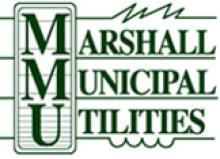
Marshall Municipal Utilities
Communities Served: Marshall, Missouri
The townspeople of Marshall needed better connectivity than what the incumbent provider would invest in, so the town went ahead on their own. In 2002, the Marshall Board of Public Works established the Internet department to provide Internet service as another municipal utility. They began to build their citywide fiber network in 2005. Most of the cables are deployed aerially throughout the town on utility poles, but residents can also request underground builds.
North Carolina
With the exception of certain grandfathered networks, cities cannot provide communications services unless they comply with numerous onerous procedural and substantive requirements. For example, public entities must comply with a panoply of legal requirements that do not apply to them, inflate their rates to unattractive levels by adding phantom costs that unspecified private providers might pay if they provided comparable services, forgo use of popular methods of financing public projects, hold a referendum before providing services, and make commercially sensitive information available to inspection by private competitors.
See NC Statutes Chapter 160A, Article 16A [PDF]

Greenlight
Communities Served: Wilson, North Carolina
The City of Wilson owns and operates the Greenlight municipal fiber network. The city built the network in 2006 after two private Internet Service Providers refused to improve their poor services. Partially because of the success of the Greenlight network, the State of North Carolina passed a law -- at the urging of telecommunications lobbyists -- to restrict local governments from following Wilson's lead. Today the Greenlight network stands out in North Carolina as one of the few networks to offer gigabit speeds (along with voice and video services) to community anchor institutions, businesses, and residential homes. We have featured Wilson in our 2016 North Carolina Connectivity Report, our 2013 The Empire Lobbies Back Report, and our 2012 Carolina's Connected Community report. Our Community Broadband Bits Podcast has discussedsmall businesses on the network and the history of the network.

Fibrant
Communities Served: Salisbury, North Carolina
The City of Salisbury began to investigate the idea of a municipal fiber network in 2005. After gaining public support for the project, the city issued revenue bonds and began deploying the Fibrant network in November 2008. The network now provides Internet access to all of the homes, businesses, and government facilities in the city of Salisbury. In 2015, Salisbury announced it would be the first city in the United States to offer 10 gigabit Internet service to all of its customers — learn more in Episode 168 of our Community Broadband Bits podcast. Private company Hotwire Communications took over operation of the fiber network in 2018, though the city still retains ownership.
Nevada
Nevada prohibits municipalities with populations greater than 25,000 and counties greater than 50,000 from offering telecommunications services.
See Nevada Statutes § 268.086 and Nevada Statutes § 710.147

CC Communications
Communities Served: Churchill County, Nevada
“Big enough to deliver, small enough to care” is the motto of this county-owned telecommunications provider in western Nevada. In 1889, CC Communications began as a telegraph company in Churchill County and overtime became the first and only county-owned telephone company in the country. In 2000, the organization became CC Communications to reflect their emerging role as a telecommunications provider. By 2011, CC Communications provided FTTH to 80% of the residents in the 5,000 square mile county. Now, CC Communications offers gigabit connectivity to large, public institutions in the region. Find more information about the network in Community Broadband Bits Episode 204.
Ohio

FairlawnGig
Communities Served: Fairlawn, Ohio
Fairlawn started building its Fiber-to-the-Premise network in 2015. The first businesses were connected the next year, and by 2017 residents could also subscribe to the network. Unlike some other communities that pursue municipal broadband, Fairlawn does not have its own electric utility. Though the FairlawnGig network has only been around for a couple years, it has already lead to new business growth and increased property values in the city. Listen to our interview with Fairlawn's Deputy Director of Public Service in Episode 292 of the Community Broadband Bits podcast for an update on the city's fiber project.
Oklahoma
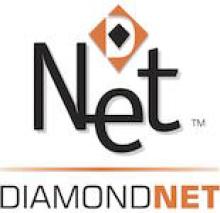
DiamondNet
Communities Served: Sallisaw, Oklahoma
In 2004, the city built a FTTH network, deploying fiber both on utility poles and underground. It is Oklahoma’s first triple-play municipal fiber network offering video, telephone, and Internet services throughout the small town. For more information, check out Community Broadband Bits Episode 144 where Chris interviews Assistant City Manager Keith Skelton.
Oregon

SandyNet
Communities Served: Sandy, Oregon
Sandy is the “Gateway to Mount Hood,” 25 miles east of Portland. With incumbent providers not providing for the community’s needs, the city decided to build its own network. Starting from scratch without an electric utility, the people originally built a citywide Wi-Fi network. Now, the city has one of the most advanced, affordable gigabit fiber networks in the nation. For more information, check out the video “Gig City Sandy: Home of the $60 Gig”, the report SandyNet Goes Gig: A Model for Anytown USA, and Community Broadband Bits Podcast Episode 167
MINET
Communities Served: Independence, Oregon; Monmouth, Oregon
Monmouth and Independence are two cities about 15 miles southwest of Salem. Together, they have about 20,000 people. Until 2005, their options for Internet access were limited to mostly dial-up. That changed when the towns came together under Oregon Revised Statute 190 to establish MINET. It’s a FTTH network that is available to every home and business in the two cities. The network offers triple-play: video, phone, and Internet services. MINET doesn’t use tax dollars, just user fees, because the project was funded through revenue bonds.
Pennsylvania
Communities may not provide broadband services unless the local telephone company has refused to provide the requested speed - regardless of the prices charged.
See 66 Pa. Cons. Stat. Ann. § 3014(h)

Home Net
Communities Served: Borough of Kutztown, Pennsylvania
Home Net, a division of the municipal utilities Hometown Utilicom, provides FTTH throughout the small town. In 2002 the network had a rocky beginning, but the network had a take rate of 51% by 2012. Thanks to the competition, every consumer in Kutztown has lower rates. Over the course of 10 years, more than $8 million has stayed local because of the competitive environment. The Governor actually gave Kutztown an award, but the next year signed a bill to prevent other communities from building their own networks.
Rhode Island

BroadbandBI
Communities Served: Block Island, Rhode Island
After years of being stuck with poor DSL and mobile service as their only option, residents of Block Island, Rhode Island's only town of New Shoreham voted to undertake the construction of a city-owned alternative. First built as a network for the town's community anchor institutions, the community voted to take on $8 million in debt to expand. Operated and maintained by Sertex, with backhaul to the mainland coming through OSHEAN, the new fiber network offers a massive upgrade for residents and businesses.
South Dakota

Swiftel
Communities Served: Brookings, South Dakota
In 1903, the City of Brookings purchased a telephone system from the Dakota Central Telephone Company. Fast forward to the 1990s when the telecommunication division of Brookings Municipal Utilities started providing dial-up Internet service. They changed their name in 1997 to Swiftel. In 2002, they upgraded to DSL. By 2006, Swiftel had started construction of a FTTH network. Swiftel began providing voice, video, and Internet services over fiber to businesses and residents in 2010.
Tennessee
Tennessee places many administrative requirements in the way of communities that want to build broadband networks via public power utilities. They must complete an explicitly detailed process to meet a bar not set for private providers intending to offer like services.
See Tenn. Code Ann. § 7-52-601 et seq.

Chattanooga EPB
Communities Served: Chattanooga, Tennessee; East Ridge, Tennessee; Ridgeside, Tennessee; Signal Mountain, Tennessee; Lookout Mountain, Tennessee; Red Bank, Tennessee; Rossville, Georgia; Flintstone, Georgia; Wildwood, Georgia;
In 2005, the City of Chattanooga's Electric Power Board (EPB) released a plan to construct a fiber network that would provide more reliable electrical service as well as faster Internet service. In 2009, a full six years ahead of the originally planned schedule, the network started providing triple-play services to its first customers. Within a few years, the network reached every customer in the EPB’s service area. From 2011 to 2015, the network has added an estimated $865.3 million to $1.3 billion to the local economy while generating at least 2,800 new jobs. Learn more in Community Broadband Bits Podcast Episode 230 (Deep History of Chattanooga's Network), Episode 235 (Marketing and Technology), Episode 110 (Understanding Wilson's and Chattanooga's FCC Petitions), and Episode 59 (Chattanooga's EPB Fiber). Our 2012 report, Broadband at the Speed of Light, also provides an overview of Chattanooga's network.

LightTUBe
Communities Served: Tullahoma, Tennessee
The Tullahoma Utilities Board (TUB), an electric, water, and wastewater provider for the city began providing telecommunications services to its first customer in 2009. Now, the network offers triple-play and enables an Advanced Metering Infrastructure supporting the management of the city’s electrical services. The Center for Public Integrity's report, How big telecom smothers city-run broadband, goes in-depth on the impact of Tullahoma's LightTube network. The network's general manager joined us for Episode 54 of the Community Broadband Bits podcast.
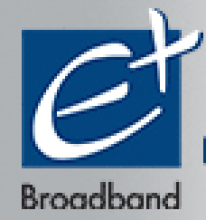
Jackson Energy Authority (JEA)/EPlus Broadband
Communities Served: Jackson, Tennessee
Jackson Energy Authority launched its EPlus Broadband network way back in 2004, when DSL was sti
ll considered fast and iPods and cellphones were just beginning to find their way into most people’s pockets. The network consists of a 100 mile fiber backbone with and a total of 650 miles of total fiber access infrastructure. The JEA network has twice been recognized as the best in the nation.

CDE Lightband
Communities Served: Clarksville, Tennessee
The Clarksville Department of Electricity (CDE) began providing Internet services through its CDE Lightband fiber network at the beginning of 2008. The network saves millions of dollars each year for the city government, local businesses, and residents because the CDE can reduce the frequency and duration of power outages by remotely monitoring electrical meters. CDE Lightband’s super fast speeds also attracted several companies to set up new operations in Clarksville, including Google and Netflix, who chose Clarskville as a location for cache servers. With a population over 150,000 as of 2016, Clarksville is the 5th largest city in Tennessee. Learn more in Episode 51 and Episode 373 of the Community Broadband Bits podcast.
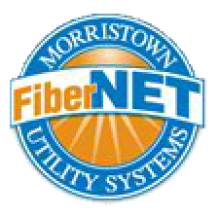
FiberNet
Communities Served: Morristown, Tennessee
FiberNet, the fiber network in Morristown, began providing local businesses with Internet service in 2006. Then in 2012, the network began providing gigabit speeds to the homes, businesses, and community anchor institutions in the city. By 2013, the fiber network had brought in major cost savings and job growth. Numerous companies have relocated to Morristown in recent years, with many citing the city’s fiber network -- including its fast speeds and lower prices for Internet service than most private ISPs around the country -- as a major reason for moving to the city. Learn more in Episode 203 and Episode 35 of the Community Broadband Bits podcast.

PES Energize
Communities Served: Pulaski, Tennessee
The Pulaski Electric System (PES), the public power utility in Pulaski, began building its FTTH network in 2006. PES first tried providing municipal dial-up Internet access in 1993, eventually serving 1,500 homes by the late 1990s. The city eventually switched to offering Wi-Fi, but sold off that business years before they again began exploring the creation of the city’s current fiber network beginning in 2002. Founded in 1891, PES is the oldest electric utility in the state.

Bristol Tennessee Essential Services
Communities Served: Bristol, Tennessee
The Bristol Tennessee Essential Services (BTES) is the municipally-owned electric utility provider. The city built the network a few years after a major 1998 snowstorm that cut off electrical services to every BTES customer. Beginning in 2005, the utility began providing Internet and video services over a newly constructed fiber network. Customers who subscribe to the fiber service now can also get automatic meter reading, theft detection, and automatic power outage detection. Learn more about the history of the network in Episode 24 of the Community Broadband Bits podcast.
Texas
Texas prohibits municipalities and public power utilities from offering telecommunications services to the public, which under state law does not include Internet access.
See Texas Utilities Code §54.201 et seq.

MB Link
Communities Served: Mont Belvieu, Texas
Although Mont Belvieu is located only 30 miles from Houston and is home to a profitable oil and gas industry, the city's conenctivity was limited to slow, unreliable DSL. After a court confimed the home rule city's authority to offer broadband access and issue Certificates of Obligation to fund a network in 2017, Mont Belvieu built a citywide fiber network called MB Link. Today, the network offers gigabit subscriptions to city residents for only $75 per month. For more on MB Link, listen to Community Broadband Bits Episode 326.
Utah
Utah places many administrative requirements in the way of communities that want to build broadband networks. They must conduct feasibility studies to show the network will cash flow in the first year and that separate services will each cash flow separately. Wholesale-only networks are exempted from some of the above requirements.
See Utah Code Ann. § 10-18-201 et seq.

UTOPIA
Communities Served: Brigham City, Centerville, Layton, Lindon, Midvale, Murray, Orem, Payson, Perry, Tremonton, West Valley City
The Utah Telecommunication Open Infrastructure (UTOPIA) is an all fiber network owned by a consortium of rural Utah towns across a sparsely populated region north of Salt Lake City. Plans for the network started to emerge in 2003 with 16 towns. As of 2016, 11 official member towns have committed funds to the network. The network now has around 11,000 subscribers. A major roadblock has been the Utah state law: private providers wanted a quick return on investment that the network could not support. Despite its economic challenges, the network has gradually become more successful over time, and they continue to explore ways of expanding the network.
Vermont

ECFiber
Communities Served: 24 member towns in East Central Vermont (citywide networks in Barnard, Granville, Hancock, Pittsfield, Pomfret, Strafford, Thetford, and West Windsor, Vermont)
ECFiber, a partnership between 24 towns in East Central Vermont, got off to a rocky start when it struggled to find financing in the aftermath of the Great Recession. However, the member towns persisted and were able to self-finance initial construction of the fiber network by issuing promissory notes to investors. After a new state law enabled the consortium to reorganize as a Communications Union District, ECFiber was able to issue revenue bonds to fund further expansion of the network. We have featured ECFiber in several episodes of the Community Broadband Bits podcast, most recently in Episode 251 and Episode 177.
Virginia
Virginia effectively bans municipalities from offering video services and places a number of cumbersome requirements on community owned broadband networks which do not apply to private companies.
See VA Code § 15.2-2108.6, VA Code § 56-265.4:4, and VA Code § 56-484.7:1

Eastern Shore of Virginia Broadband Authority
Communities Served: Accomack County and Northampton County, VA (citywide network in Harborton, VA)
Accomack and Northampton Counties established the Eastern Shore of Virginia Broadband Authority (ESVBA) in 2008 to bring better connectivity to the Virginia portion of the Delmarva Peninsula. ESVBA started with a middle-mile, open access network which private providers used to offer residents and businesses wireless Internet access. Since 2016, ESVBA has been deploying Fiber-to-the-Home as well following a successful pilot project in Harborton. Several federal agencies, including NASA and NOAA, also connect to the network, and federal grants have helped fund the fiber deployment. For more information, listen to Episode 294 of the Community Broadband Bits podcast.
Washington
Public Utility Districts may not provide telecommunications services directly to customers.
See Wash. Rev. Code Ann. § 54.16.330

Benton PUD
Communities Served: Benton County, WA
Now people in south-central Washington have the opportunity to access gigabit speeds thanks to their public utility district (PUD). The Benton PUD built the fiber network in the mid-2000s, and now it generates a revenue of around $2 million a year. The PUD became a member of the Northwest Open Access Network (NOANet) and hosts several retail service providers who bring FTTH and wireless to local residents and businesses. For more information about NOANet and Benton PUD, check out the Community Broadband Bits Podcast Episode 159 and Episode 164.
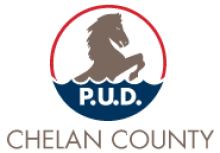
Chelan PUD
Communities Served: Chelan County, WA
This rural county in Central Washington may not have many people, but it does have an extensive fiber network to connect isolated residents and businesses with the rest of the world. Chelan Public Utility District (PUD) had completed most of the open access, wholesale, fiber network in 2010. Now, the Chelan Public Utility District covers about 70% of residents in the county. For more information about Northwest Open Access Network (NOANet) and Chelan PUD, check out the Community Broadband Bits Podcast Episode 159 and Episode 164.

Franklin PUD
Communities Served: Franklin County, WA
Franklin Public Utility District (PUD) has built more than 300 miles of fiber throughout Franklin County, including a citywide FTTH network in the county seat of Pasco (pop. 73,000). Because of state restrictions on community owned broadband networks, the PUD does not provide Internet access directly. Instead, 28 retail service providers offer broadband access to county residents and businesses using Franklin PUD's wholesale fiber network.
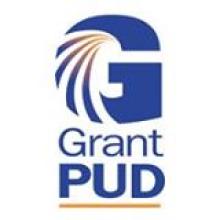
Grant PUD #2
Communities Served: Grant County, WA
The Public Utility District #2 (PUD #2) in Grant County, Washington owns an open access fiber network. Residents and businesses can choose to get services over the county-owned network from a variety of private companies. The county constructed the network out of frustration with the paltry options for video and Internet services. In 2001, Grant County PUD began pilot testing the fiber network. Some county residents didn’t even have phone service prior to PUD’s construction of this fiber unless they were willing to pay a phone line extension charge in the range of $20,000 to $50,000.
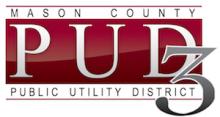
Mason County PUD #3
Communities Served: Mason County, Washington
Beginning in 1939, the residents in Mason County in Western Washington began getting their electrical services through the newly formed Public Utility District 3. In the years that followed, the county eventually began offering water, sewer and, in 1999, the began installing its fiber optic network with the original plan to use the network for utilities purposes. Soon after completing construction on the network, the county also began providing wholesale services. Several private ISPs provide video, voice, and Internet service over the network. Mason County PUD 3 is also a member of the Northwest Open Access Network (NoaNet).
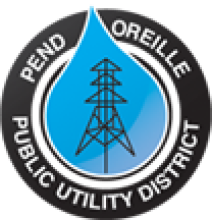
Pend Oreille PUD Community Network System
Communities Served: City of Newport and surrounding area in Pend Oreille County, Washington
Pend Oreille County, situated in the Northeastern corner of Washington State, finished work in 2013 on a plan to install a 573 mile fiber optic cable network. The Pend Oreille County Public Utility District (PUD) owns the Community Network System (CNS) that provides wholesale fiber optic broadband services to this previously underserved mostly wilderness region of the state. The original plans for the network say it will be comprised of 588 miles of buried and overhead cable when all construction is completed.
Wisconsin
Communities wishing to provide broadband services must meet a variety of administrative hurdles.

Reedsburg Utilities Commission
Communities Served: Reedsburg, WI
Reedsburg first got into the telecommunications business in 1998 when it constructed a small fiber ring to monitor the city's water and electric systems, as well as to connect some of the school buildings. Initially, the city went to Verizon and Charter but they refused. The Reedsburg Utilities Commission (RUC) went ahead on their own to install the fiber. During the buildout process, companies along the line requested to be connected to the network. Soon, RUC was planning to create a FTTH network. The city completed the FTTH construction in 2006 and had a take-rate of over 70% by 2009. For more information, check out Community Broadband Bits Podcast Episode 147.
Wyoming
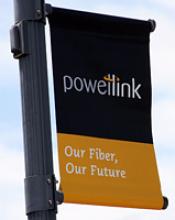
PowellLink
Communities Served: Powell, WY
Powell, Wyoming, began constructing PowellLink in 2007. By 2010, PowellLink had a 40% take rate. The city then bought back their initial $6.5 million bond at a lower interest rate from the private investors. This was 18 years ahead of schedule for the network. After buying back the bond, the city renegotiated with their partner Tri County Telephone West and established PowellLink as an open access network. The city expects a financial return of more than $22 million over the next thirty years.
